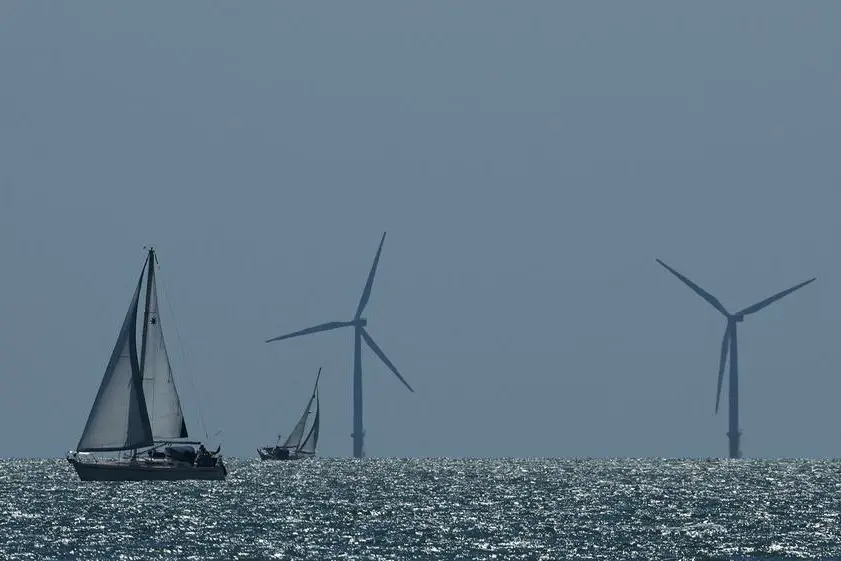PHOTO
Image used for illustrative purpose Photo Taken In Dar Es Salaam, Tanzania. Getty Images
The sun blazed overhead in the capital as Tanzanian meteorologists released their most comprehensive climate assessment yet.
The verdict was clear and concerning: 2024 was Tanzania’s hottest year on record since monitoring began in 1970, with unprecedented rainfall extremes and destructive weather events that claimed lives and displaced communities across the East African country.“The State of the Climate report for Tanzania shows that 2024 was the hottest year on record for our country. These alarming changes underscore the importance of working together to address these challenges,” said Deputy Minister of Transport, David Mwakiposa Kihenzile, during the launch of the Early Warnings for All (EW4All) Initiative in Dodoma last month.
According to the Tanzania Meteorological Authority (TMA), 2024 broke multiple temperature records.
The country’s annual mean temperature reached 24.3 degrees Celsius, a staggering 0.7 degrees Celsius above the long-term average (1991-2020), surpassing the previous record set just a year earlier in 2023.“In 2024, Tanzania experienced significantly warmer-than-average temperatures, making it the warmest year since 1970, breaking the previous record set in 2023 by a small margin of 0.1 degrees Celsius,” reads the newly released Statement on the Status of Tanzania Climate in 2024.
Dr Ladislaus B Chang’a, acting Director-General of TMA, points out the concerning pattern in the data: “Minimum temperature anomalies exceeded one degrees Celsius above the long-term average in February, March, April, and May. These anomalies were higher compared to maximum temperatures, highlighting the intensification of night-time warming.”Read: EA must look for ways to stop annual tragicomedy of disastersThis pattern reflects global climate change trends, where warming nights often outpace warming days—a phenomenon scientists call “asymmetric warming” that can disrupt ecosystems and harm human health by preventing adequate cooling during sleep hours.
Beyond record heat, Tanzania experienced extraordinary rainfall variability throughout 2024, culminating in the fourth-wettest year on record since 1970 and the wettest in the past two decades.
January 2024 stands out as particularly unusual. Typically a relatively dry month, especially in the northern and northeastern regions, it instead became the wettest January on record, with rainfall in some areas exceeding 600 percent of normal values.“The Morogoro station recorded 608 millimetres of rainfall in January, which is six times its long-term average,” the TMA report states.
Similarly extreme values were recorded at Dar es Salaam’s Julius Nyerere International Airport and Kibaha stations. These unusually heavy rains triggered devastating floods, particularly in southeastern and northeastern regions.
According to data from the Department of Disaster Management, flooding in the Pwani region alone displaced more than 92,000 people and damaged more than 105,000 acres of farmland between January and March.
Cyclones impactPerhaps the most striking of the 2024 climate anomalies was tropical Cyclone Hidaya, which made landfall over Mafia Island in the Lindi region on May 4, 2024. The cyclone was the third recorded tropical cyclone or depression to ever make landfall in Tanzania, following an unnamed cyclone in 1952 and Tropical Depression Atang in 2002.“It was the most intense cyclone ever recorded in this region of the Indian Ocean, highlighting the increasing significance of extreme weather events in the area,” the TMA report notes.
Hidaya’s impact was severe: the Kilwa meteorological station set a record when it reported a 24-hour rainfall total of 316.6 mm on May 4th—representing 327 percent of the station's long-term May average.
Even more astonishing, 200mm of this rainfall fell within just six hours, and a total of 428mm was recorded over a 48-hour period.
The cyclone claimed five lives, injured seven and displaced more than 21,500 people. It damaged or destroyed more than 3,000 houses and severely impacted infrastructure, including 23 kilometres of roads and five bridges.
According to the WMO’s State of the Global Climate report, 2024 continued an ominous trend that has seen each of the past nine years rank among the ten warmest on record. The average global temperature in 2024 was around 1.4 degrees Celsius above pre-industrial levels, dangerously close to the 1.5 degrees Celsius threshold that scientists warn would trigger severe and potentially irreversible climate impacts.“The extraordinary global heat we’ve witnessed in 2024 has affected every corner of our planet,” the WMO secretary-general said.“No region has been spared, with Africa experiencing some of the most severe warming relative to historical norms. The accelerating pace of these records should serve as a stark warning that climate change is not a distant threat but a present reality requiring immediate action.”Disproportionate challengesKenya, like Tanzania, also declared 2024 its hottest year on record, with the Kenya Meteorological Department (KMD) reporting temperature anomalies that mirrored those observed by TMA.
The regional consistency of these record temperatures across East Africa highlights the broad-scale nature of the warming trend affecting the entire region.
This pan-African warming has significant implications for agriculture, water security and public health across the continent. With the African continent warming faster than the global average, countries like Tanzania and Kenya face disproportionate challenges despite having contributed minimally to the greenhouse gas emissions driving climate change.
The climate extremes witnessed in Tanzania exemplify the profound injustice at the heart of the climate crisis: Africa, which contributes only three to four percent of global greenhouse gas emissions, is experiencing some of the most severe climate impacts in the world.
According to the African Development Bank (AfDB), the continent is warming 1.5 times faster than the global average, despite having historically contributed the least to atmospheric carbon. This disproportionate vulnerability is exacerbated by high dependence on rain-fed agriculture, limited adaptive capacity and pre-existing development challenges.
A recent report by the Intergovernmental Panel on Climate Change (IPCC) estimated that climate change could reduce GDP across African economies by up to 15 percent by 2050. Already, climate-related disasters cost the continent between two and five percent of GDP annually, with extreme weather events like those experienced in Tanzania becoming increasingly common.
The Horn of Africa has endured multiple consecutive failed rainy seasons in recent years, while countries like Tanzania have experienced both record-breaking floods and severe dry spells within the same year.
Leader in climate ambitionDespite these challenges, Africa has emerged as a leader in climate ambition and clean energy transition. The African Union’s Agenda 2063 places environmental sustainability and climate-resilient economies at its core, while individual countries have developed ambitious Nationally Determined Contributions (NDCs) under the Paris Agreement.
At the inaugural Africa Climate Summit held in Nairobi in September 2023, African leaders adopted the Nairobi Declaration, which established a unified continental position on climate action centred on investments in renewable energy, climate adaptation and carbon markets.
The summit emphasised Africa’s potential to serve as a global hub for green manufacturing and critical minerals needed for the energy transition.“Africa views better monitoring and understanding of the climate as a springboard for climate-informed decision-making, development planning, and actual climate action,” said Josefa Leonel Correia Sacko, commissioner for Agriculture, Rural Development, Blue Economy and Sustainable Environment at the African Union Commission.
The continent already sources 40 percent of its power from renewable energy, led by nations like Kenya, which generates more than 90 percent of its electricity from renewable sources—predominantly geothermal, hydro and wind. Tanzania itself has set ambitious targets to increase its renewable energy capacity, leveraging its considerable solar, hydropower and geothermal potential.
The African Renewable Energy Initiative aims to achieve at least 300GW of renewable energy capacity by 2030. Meanwhile, the Great Green Wall initiative seeks to restore 100 million hectares of degraded land across the Sahel, sequestering an estimated 250 million tonnes of carbon.
For Tanzania and other vulnerable nations, these global governance outcomes have direct implications for domestic adaptation and resilience efforts. While international finance remains crucial, countries are increasingly focusing on national initiatives like the EW4All to protect citizens from climate impacts that can no longer be fully avoided.
Climate scientists at TMA attribute 2024’s extraordinary conditions to several converging factors, including a strong El Niño in early 2024, a positive Indian Ocean Dipole (IOD) phase through the first quarter of the year, and unusual tropical cyclone activity.“The year began with a strong El Niño in January and February, gradually weakening to a moderate El Niño in March and April before transitioning to ENSO-neutral conditions from May through October 2024,” the report explains. “By November, ENSO conditions shifted to La Niña, which persisted through December.”This evolution of ocean temperatures played a crucial role in Tanzania’s rainfall patterns, with El Niño typically associated with wetter conditions in East Africa.
Against this backdrop of intensifying climate impacts, Tanzania has taken a significant step forward by launching the Early Warnings for All (EW4All) Initiative, joining neighbouring countries Burundi, Rwanda, South Sudan, and Uganda in strengthening protections against climate-related hazards.
© Copyright 2022 Nation Media Group. All Rights Reserved. Provided by SyndiGate Media Inc. (Syndigate.info).





















